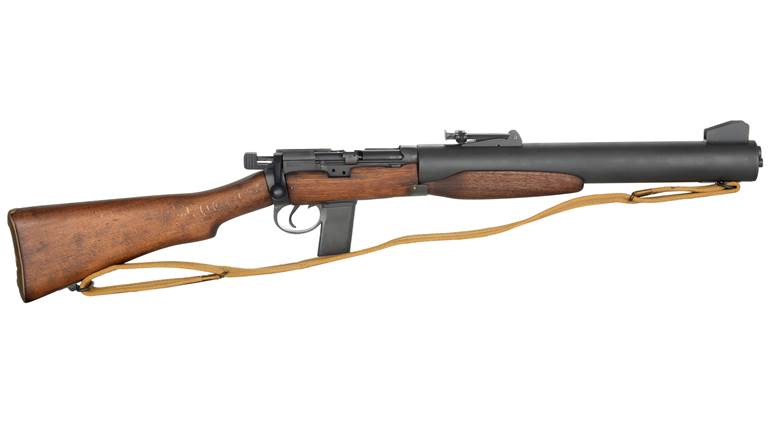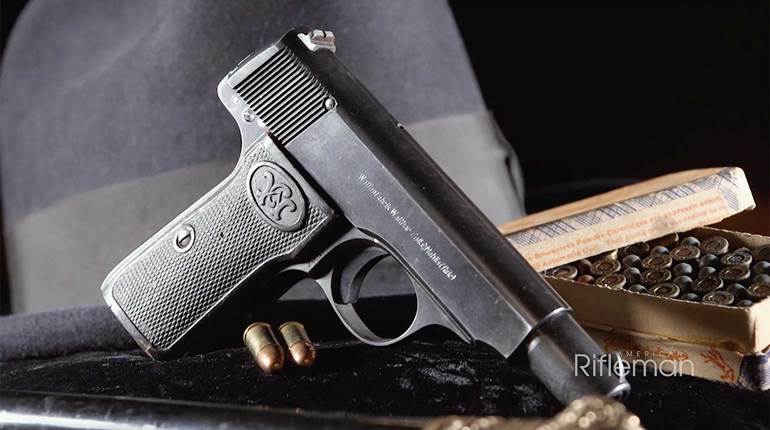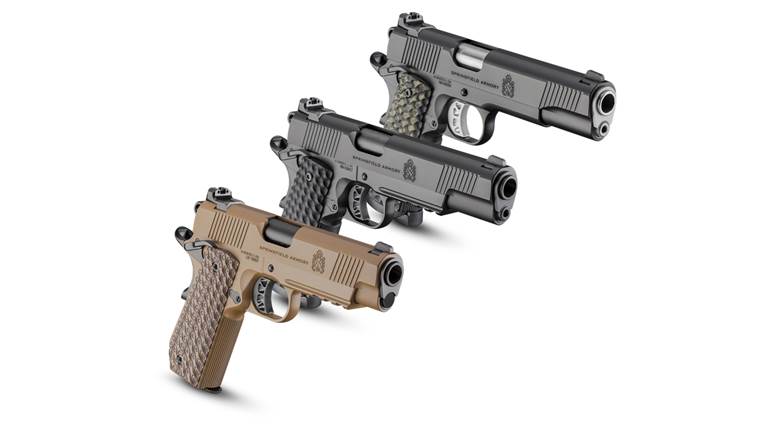
By the early 1930s, Germany was working clandestinely to circumvent the military restrictions imposed on it by the Versailles Treaty. One way to get around prohibitions on military training was to obscure it under the guise of “sport.” To that end, manufacturers began making .22 rifles styled like the Mauser Gewehr 98 to be purchased by shooting clubs and paramilitary organizations. Eventually, the rifles, like the “competitions” they were used in, would be standardized; but, at the start, every manufacturer offered its own unique design.
Many companies, including Erma, Geco and Walther, jumped to meet the demand for a military-style kleinkaliberbüchse (small-bore rifle). Simson, a firm famous for its production of Model 98 rifles and Luger handguns—in addition to automobiles, motorcycles and bicycles—introduced the W625, based on its Model 317 sporting rifle. A single-shot, bolt-action rifle with a full-length military-style stock, the W625 closely replicates the dimensions of the Wehrmacht’s standard infantry rifle, the 98k. Its barrel and overall length were approximately the same, and it weighed about a pound less. The bolt handle, bolt-mounted wing safety and bolt release were in similar positions to its big brother. The rear sight was a 98-style tangent design graduated from 25 to 200 meters. The W625 would go through several changes during its production. The B model pictured has sling mounts that are placed on the left side and a faux cleaning rod/stacking rod under the barrel.

In a bitter case of irony during the W625B’s production, the Jewish-owned Simson company was confiscated by the Nazis and renamed Berlin Suhler Waffen-und Fahrzeugwerke (BSW), later Gustloff-Werke. It continued to produce firearms throughout World War II. The W625B pictured here is one of the final rifles produced under the Simson name.
Because each firm made its Model 98-style .22 a little differently, the need was seen to standardize. Mauser was chosen to develop a rifle based on its “B-series” .22s. The result was the DSM-34 or Deutsche Sportmodell, which was manufactured by a dozen companies. In 1938, the more famous Kleinkaliber Wehrsportgeweher (KKW) or “Small Bore Sports Rifle,” a design that closely duplicated the 98k down to its bayonet lug, was introduced.
Many of these “.22 trainers” will be found with military unit markings, the names of shooting clubs or sporting goods retailers. The diversity of their variations makes for a fertile field for collectors. Those interested in the rifles should pick up a copy of the book, Training Rifles Of Third Reich Germany by Robert Simpson, a reference based on the Simpson collection of more than 1,000 training rifles.
The W625B pictured has no import marks and was probably a G.I. bring-back following World War II. The .22 trainers were popular war trophies and, back in the United States, their chambering ensured a ready supply of ammunition and they proved to be perfect for teaching kids how to shoot and hunt small game. As such, this example has seen use, with wear evident on both its metal and stock finishes. It remains in fair condition with an excellent bore, though it is missing the sling that each rifle was originally supplied with, as well as the rear sling stud. Its value is $600.
Once a neglected field of collecting, German .22 training rifles have increased in value, especially for rarer makers, those with special markings or in a unique configuration. All are good representatives of a time when a nation used sport as a secret way to train for war.
Gun: W625B
Manufacturer: Simson & Co. (Germany)
Chambering: .22 Long Rifle
Condition: NRA Fair (Modern Gun Standards)
Value: $600


































